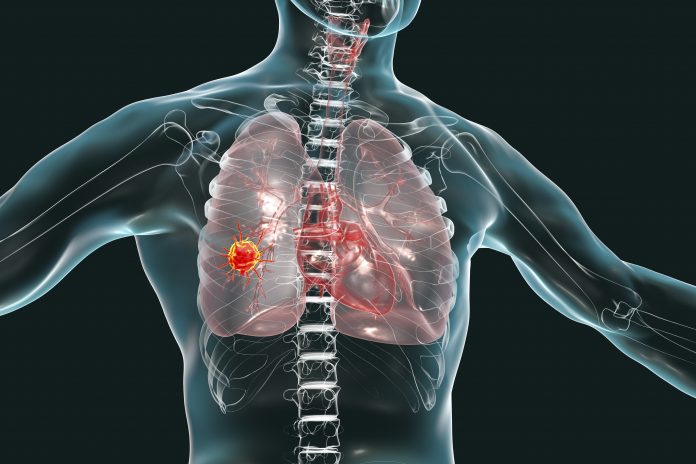
A collaborative study by Spanish researchers at the Cancer Research Center (CSIC-University of Salamanca) and The Experimental Oncology group at CNIO (Centro Nacional de Investigaciones Oncológicas) has found the mechanism of KRAS inhibitor tumor resistance and suggest that it can be overcome by more potent drugs or degraders.
The study was conducted in a genetically modified mouse model with mutations in the KRAS and other mutated genes that lead to the development of the aggressive tumors seen in human.
“These mechanisms studied in the mouse are also present in some human tumors. Therefore, the results of this research may help to identify new forms of treatment adapted to each patient,” said the study’s first author Marina Salmón, a researcher in the Experimental Oncology group at the CNIO.
Sotorasib was approved by the United States Food & Drug Administration in 2021 and was the first personalized drug that targets the most common KRAS mutation in lung cancer, one that is a direct result of smoking. The drug works by inhibiting the mutant KRASG12C isoform. Unfortunately, patients given the sotorasib very quickly develop resistance to the drug.
Matthias Drosten from the CSIC-University of Salamanca, leads the group of researchers using the modified mouse models to understand sotorasib resistance and to develop strategies to overcome it and is optimistic this can be overcome.
“We have seen that one of the best strategies to treat these tumors is to inhibit KRAS, because in a second mouse model we have found tumor regression and cure in all cases when the mutated KRAS gene is completely eliminated,” he noted.
The study, published in the Journal of Clinical Investigation, showed that lung tumor cells treated with the first approved KRAS inhibitor sotorasib rapidly adapted to the drug by increasing the number of mutated copies of the KRAS gene and by increased expression by the xenobiotic pathways that limited the amount of the drug available to the tumor cells.
The new findings, the investigators noted, provide an opportunity to develop more effective personalized treatments using the new understanding of how resistance develops. One potential finding that could drive new therapies is that the team found that the tumor cells with gene amplification lost their fitness when they were no longer exposed to inhibitor. “Adaptive KRAS amplification due to a strong selective pressure to increase KRAS copy number during treatment might be prevented by applying an intermittent treatment regimen, rather than a continuous schedule,” the researchers noted.
A second new approach could be to target other molecules such as the NF-kB and STAT3 proteins which were shown to be mediators of resistance within lung tumor cells, especially those harboring EGFR mutations.
Finally, the investigators also suggested that new, more powerful therapies capable of complete elimination of KRAS from the cancer cells would also be an effective approach.
In short, Drosten noted that “this research should encourage other researchers and the pharmaceutical industry to continue developing new therapies directed against KRAS.”













